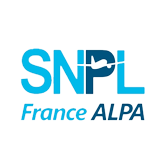
Press Release: IFALPA calls on Albania to adhere to International Regulations and free three air traffic controllers
Safety Bulletin IFALPA: Safety Concerns in Tirana FIR
Joint Safety Bulletin Occupational Health and Safety in the context of COVID
This joint bulletin (A joint publication with IATA, CANSO, and IFATCA on Safety Risk Assessments (SRA) on the effects of COVID on operations) is a result of the SRA and the webinar series Safely Navigating the Industry Recovery. It highlights key considerations with regards to the impacts of health measures on operational staff, the possible long-term impacts of COVID infections, and best practices for health measures.
Safety Bulletin IFALPA: Saudi Arabia – Yemen Airspace
Safety Bulletin IFALPA: NAT Data Link Special Emphasis Items
Brèves internationales du SNPL France ALPA – Décembre 2020/janvier 2021
ECA Press Release: Pilots endorse EASA’s Airworthiness Directive on 737MAX
Re-certification introduces better training requirements for MAX pilots The European Aviation Safety Agency (EASA) is clearing the Boeing 737 MAX to fly after nearly 2-year grounding. The Airworthiness Directive issued today concludes a meaningful and thorough Boeing 737 MAX Return To Service (RTS) process. While trust and confidence were severely undermined at the start of the recertification, the involvement of other parties – such as EASA and pilots – as well as the increased scrutiny from EU decision-makers has resulted in a more transparent and reassuring process.
ECA Annual Report 2020
Comme chaque année, l’ECA (European Cockpit Association) fait le bilan de l’année écoulée. Dans son rapport annuel, l’Association revient tout particulièrement sur les travaux qu’elle a entrepris au fur et à mesure de l’évolution de la crise sanitaire pour minimiser ses effets négatifs sur les pilotes mais aussi sur la reprise des opérations dans un tel contexte. Elle évoque également ses initiatives au niveau des instances européennes pour relancer le secteur aérien de manière plus durable. Le rapport comporte enfin une rubrique plus traditionnelle dans laquelle l’ECA offre un aperçu du reste du travail hors COVID.
Safety Bulletin IFALPA: Safety of Civil Aircraft Operating in Airspace under the Authority of the Republic of South Sudan
IFALPA has received information of the need to fully assess the potential for risks to flight safety to national civil aircraft owners and operators intending to operate within the airspace under the authority of the Republic of South Sudan (...)
Safety Bulletin IFALPA: Operations at Non-Towered Airports due to ATC Zero Conditions
As the COVID-19 pandemic continues to impact flight operations ALPA, International have issued an Operations Bulletin concerning temporary reduced controller staffing or shut down at ATC facilities. The status of the facility during a closure is known as “ATC Zero.” When an Air Traffic Control Tower (ATCT) is ATC Zero, the airport remains open, but the airport reverts to non-towered operations and the airspace usually becomes Class G (uncontrolled) airspace.
